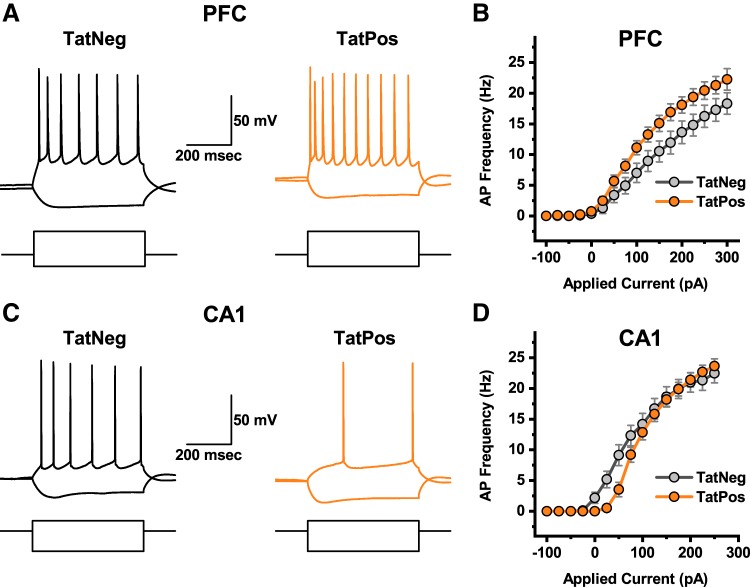Fig. 1.
Region-specific effects of human immunodeficiency virus (HIV)-1 transactivator of transcription protein (Tat) on neuronal gain. A: response of a representative layer 2/3 medial prefrontal cortex (mPFC) pyramidal neuron obtained from a TatNeg animal (left, black traces) and TatPos animal (right, orange traces) to current steps of −100 pA and +200 pA (square pulses illustrated below the voltage traces). B: complete neuronal gain curves constructed using data from 14 TatNeg and 17 TatPos neurons indicate that HIV-1 Tat expression was associated with a clear increase in excitability of mPFC layer 2/3 pyramidal neurons (see results for additional details). C: response of a representative CA1 pyramidal neuron obtained from a TatNeg animal (left, black traces) and TatPos animal (right, orange traces) to current steps of −100 pA and +50 pA (square pulses illustrated below the voltage traces). D: complete neuronal gain curves constructed using data from 17 TatNeg and 17 TatPos neurons indicate that HIV-1 Tat expression was associated with a clear but selective decrease in excitability of CA1 pyramidal neurons, in response to current injections of <100 pA (see results for additional details).

